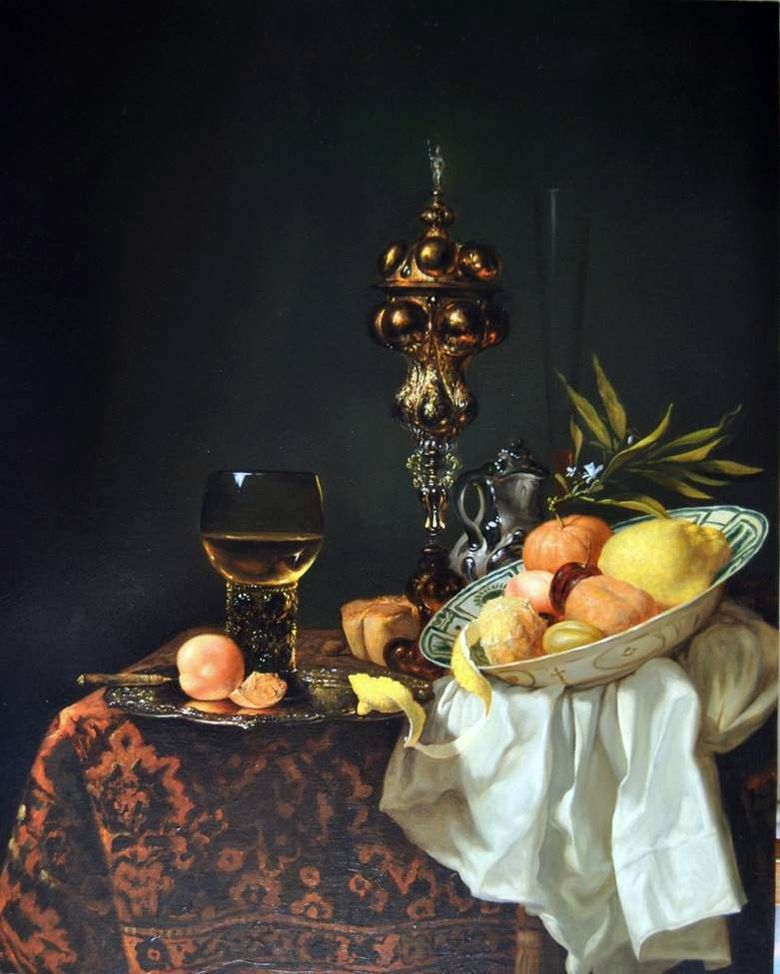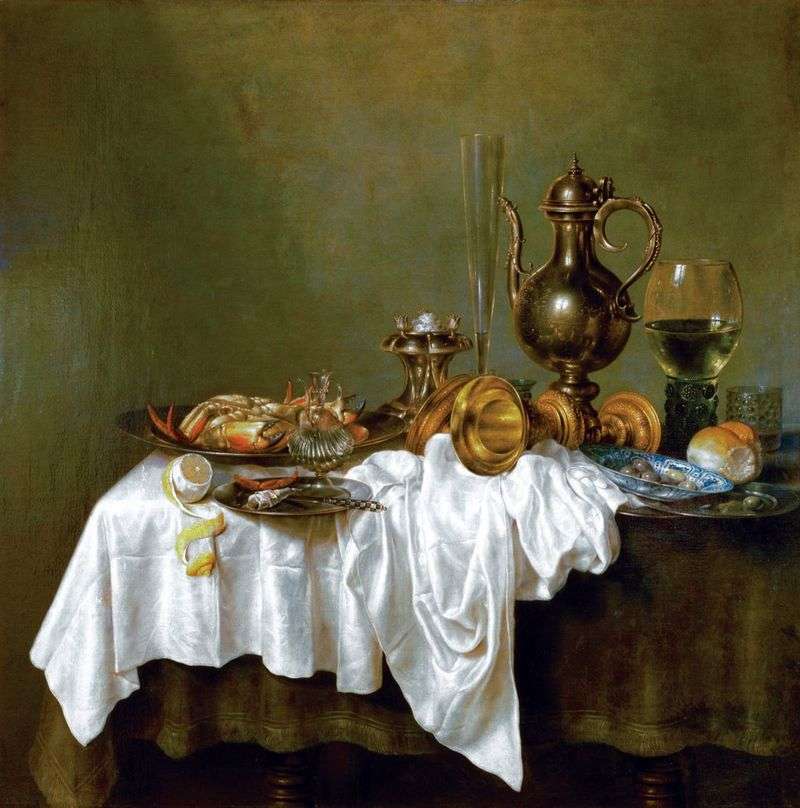
The Hermitage painting “Dessert” is one of the best examples of such paintings. Kalf, who has an impeccable taste, avoids pomposity. The richness of his still lifes is first of all the richness of the play of light and shade and the color that flames from within.
In the hot burning of paints, objects seem to grow out of the dark background of the picture. A bright ray of light tears out of the half-darkness a bowl of fruit, a peach on a silver tray and a crumpled white tablecloth. The glass and silver goblets still reflect the light, and the thin glass flute filled with wine almost merges with the background.
Kalf had no equal in the skill of translating the material qualities of a thing into the poetic language of art, in the ability to see the picturesque side of an object. Undoubtedly, a juicy fruit with its abundance of shades of orange and golden was closer to the heart of the artist than the silver dish on which it lies, and a crumpled white tablecloth, written with unsurpassed skill, amazes the viewer no less than the luxurious oriental carpet under it.
Before the arrival in 1915 of the Hermitage, the picture “Desert” was part of the collection of the famous Russian geographer and traveler P. Semenov-Tian-Shansky – a great connoisseur and lover of Dutch and Flemish art. Willem Kalf, whose life and work was held in Amsterdam, is one of the largest masters of the Dutch classical still-life, and the picture from the Hermitage collection is a recognized masterpiece of the painter.
The still life of Kalfa belongs to the category of “breakfasts”, which included pictures of one single dish, fruit, among which there was an indispensable lemon with cut skin, vessels with wine. The artist skillfully transmits the texture of each object: a glass, a faience painted dish, a gilded goblet, an oriental carpet, a snow-white napkin.
In the picture there is a strong impact, which had on Kalfa painting Rembrandt: the objects are shown against a dark background, the bright light seems to revive them, balancing the warmth of the golden rays. Motifs and colorful splendor still life, like the Calf, appealed to the tastes of the wealthy Dutch bourgeois, their craving for luxury.
 Still life with a drinking horn by lobster and glasses – Willem Kalf
Still life with a drinking horn by lobster and glasses – Willem Kalf Dessert – Willem Kalf
Dessert – Willem Kalf Still life with a tin mug by Willem Klas Kheda
Still life with a tin mug by Willem Klas Kheda Dessert by Jan David de Hem
Dessert by Jan David de Hem Breakfast with crab by Bill-Klas Kheda
Breakfast with crab by Bill-Klas Kheda Still life with a cup of pearl shell by Willem Calf
Still life with a cup of pearl shell by Willem Calf Postre – Willem Kalf
Postre – Willem Kalf Still life with a golden cup by Willem Klas Kheda
Still life with a golden cup by Willem Klas Kheda